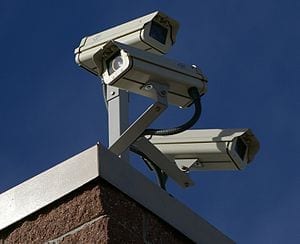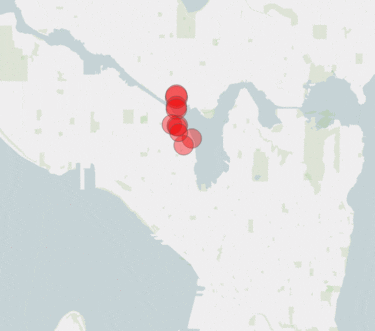
Marcus Ranum wrote “Information security’s response to bitter failure, in any area of endeavour, is to try the same thing that didn’t work — only harder.”
It seems that this often applies to the entire security field, not just IT. Here’s a timely example.
There have been calls, in the wake of April’s bombing at the Boston Marathon, for increased surveillance of Americans — already, arguably, the most-surveilled and most spied-on citizens on the planet, to such an extent that ex-Stasi staff are likely envious. In particular, there have been calls for mass (camera) surveillance from police department officials in Boston and New York City.
These recommendations clearly raise serious issues about privacy and the Constitution and the values we hold as a society. Others have written about those issues more eloquently than I can. But let me break from their approach and point out something on a much more pragmatic level:
It didn’t work.
Let me ask you to consider for a moment the Boston Marathon and all the video/still cameras that were focused on it, the ones whose images were in front of the nation nonstop for days. Anyone who’s run in or been to a major distance running event knows that there are cameras everywhere. There are race operation cameras at the start and finish. There are TV news cameras, all over the course — some fixed, some mobile. There are family/friends of runners and other spectators, concentrated at the start and finish, but scattered everywhere along the course, and nearly all of them have cameras. There are official and unofficial race photographers in multiple locations who try to grab still shots of every runner and then offer them for sale afterwards. There are even some runners wearing cameras from time to time. And then of course there are all the now-ubiquitous cameras on stores, banks, parking garages, traffic signs, and on all kinds of other structures along the way.
We don’t know why the those responsible for the attack in Boston did it; but what we do know is that the attack required a modicum of planning and intelligence: they weren’t entirely stupid. I submit that there is no possible way that they did not know that the finish area of a major marathon is one of the most heavily-photographed areas of the planet on the day of the event. Yet they not only selected it as their target, they made no attempt at all to evade the massive number of lenses focused on it.
Thousands of cameras equated to zero deterrent value.
Yes, those cameras certainly helped identify and locate the suspects: but that is cold consolation to those who lost life and limb, because they didn’t actually prevent the attack. The upcoming prosecution of Dzhokhar Tsarnaev, while it might yield some answers to troubling questions, is not going to help local runner Carol Downing’s daughters (Nicole Gross suffered two broken legs; Erika Brannock lost part of one of hers) recover and rehab and go on with their lives.
A thousand more, ten thousand more, a hundred thousand more cameras would not help: cameras have no deterrent value to people who are prepared to die and/or don’t care if they’re identified.
There also remains the distinct, disturbing possibility that the attackers chose the locationbecause they knew it was so thoroughly covered with cameras. An attack like this is clearly directed at those present, but if its real purpose is, as Bruce Schneier observes, to attack the minds of hundreds of millions elsewhere, then it can only reach its targets if the event is heavily documented and widely disseminated.
To put that point another way: it’s entirely possible that adding cameras to a particular location will decrease public safety — because it may make that location more attractive to those who want to make certain their attacks are captured on video and of course, dutifully replayed in slow-motion thousands of times by 24×7 news networks with many hours of airtime to fill.
Go deeper with Bing News on:
Spying on the public
- The Spy Inside Your Smartphone
Around the world, governments are spying on journalists with hacking software originally designed to capture criminals.
- Germany accuses China of spying on it, arrests 4 Germans. Beijing denies, summons envoy
Arrests come amid growing friction between Berlin and Beijing, with German ambassador to China Patricia Flor calling the summon ‘a telling move’.
- Discord drops the hammer on data-scraping 'Spy.pet' website, says it is 'considering appropriate legal action'
A week after a report revealed a site called Spy.pet that claimed to have scraped billions of public messages posted to Discord and was offering them for sale, Discord has banned multiple accounts ...
- Pro-Israel Groups Pushed for Warrantless Spying on Protesters
The answer is the Congressional Review Act, which Republicans in a second Trump presidency could use to further attack the administrative state. Finalizing rules early protects them from this fate.
- Message-scraping, user-tracking service Spy Pet shut down by Discord
Spy Pet, a service that sold access to a rich database of allegedly more than 3 billion Discord messages and details on more than 600 million users, has seemingly been shut down. 404 Media, which ...
Go deeper with Google Headlines on:
Spying on the public
[google_news title=”” keyword=”Spying on the public” num_posts=”5″ blurb_length=”0″ show_thumb=”left”]
Go deeper with Bing News on:
Surveillance
- MSU to expand surveillance system into East Lansing
Michigan State University plans to expand its new centralized surveillance system into the city of East Lansing, a move experts say exacerbates current privacy and civil liberty concerns with the ...
- Davenport man was under surveillance, subject of investigation before he was killed
Newly released search warrant information confirms a Davenport man was the subject of a drug investigation months before his death.
- Man charged after surveillance videos show him using tow truck to steal cars, police say
Prosecutors charged Wendell Bryant with two counts of stealing a motor vehicle and one count of property damage for the two car thefts.
- Surveillance video shows David Tepper's visit to local bar with sign critical of him
Panthers owner David Tepper paid a surprise visit to a local bar on Thursday night. Recently obtained security footage shows what went down.
- Christine Quinn Claims Husband Placed Hidden Cameras the ‘Size of Quarters’ in Their Home to Keep Her ‘Under Surveillance’
In a new filing obtained by PEOPLE, the reality star accuses her estranged husband Christian Dumontet of monitoring her without her “knowledge or consent” ...
Go deeper with Google Headlines on:
Surveillance
[google_news title=”” keyword=”surveillance” num_posts=”5″ blurb_length=”0″ show_thumb=”left”]










